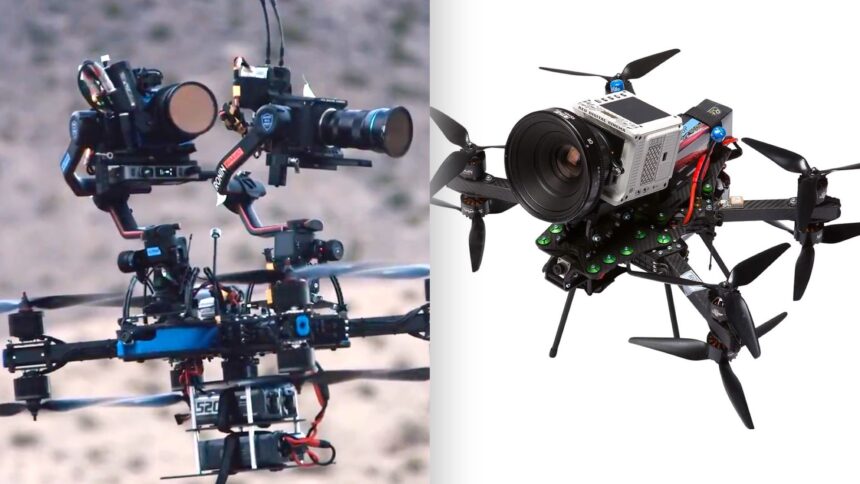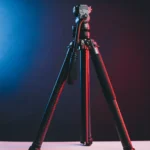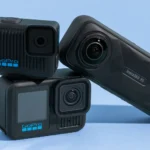Capturing smooth, dynamic FPV drone-style footage from the ground has become increasingly popular among videographers, action-sports shooters, and content creators. Whether you’re filming fast-moving subjects, tracking athletes, or creating cinematic b-roll, the right stabilizer makes all the difference. Ground-based FPV shooting demands stability, flexibility, and gear that can handle rapid motion without sacrificing clarity.
- What Makes a Good Stabilizer for FPV-Style Ground Shooting?
- Types of Stabilizers That Work Best for FPV Ground Footage
- Top Features to Look for in a Ground FPV Stabilizer
- Best Stabilizers for FPV-Style Ground Shooting
- Tips for Capturing Smooth FPV-Style Ground Footage
- Comparison Table: Best Stabilizer Types for FPV Ground Shooting
- FAQs About Stabilizers for FPV-Style Ground Shooting
- Final Thoughts
In this guide, we explore the best stabilizers for shooting FPV-style footage on the ground, what features to look for, and how to choose the right setup for your filming needs. If you’re building a complete filming kit, accessories like camera mounts and holders from Camera Holders can also enhance your workflow, giving you more freedom and control.
What Makes a Good Stabilizer for FPV-Style Ground Shooting?
FPV-style footage is known for its speed, fluidity, and immersive feel. When you’re replicating this look from ground level, you need stabilizers that:
- Handle sudden movements without shaking
- Support quick panning and directional changes
- Keep the footage smooth while you walk, run, or track subjects
- Accommodate different camera sizes
- Provide flexibility for low-angle or handheld FPV motion
Not all stabilizers are designed for this kind of shooting, so choosing wisely is essential.
Types of Stabilizers That Work Best for FPV Ground Footage
Gimbal Stabilizers
Gimbals are one of the most popular choices for FPV-style ground shooting. They use motorized stabilization to keep the camera level even during fast movement.
Key advantages:
- Excellent motion compensation
- Ideal for run-and-gun shooting
- Smooth cinematic movement
- Works with DSLRs, mirrorless cameras, and action cameras
Gimbals are especially effective for tracking shots, chase sequences, and rapid directional changes.
Handheld Camera Rigs
Handheld rigs allow more natural, fluid motion while minimizing micro-shakes. They are great for FPV-style movement because they give operators more control over speed and direction.
Benefits:
- Lightweight configurations
- Flexible positioning for low shots
- Perfect for action content
- Works well with compact cameras
Pairing a handheld rig with a high-quality camera mount from Camera Holders can further enhance stability and comfort.
Shoulder Rigs
Shoulder rigs provide additional support for long shooting sessions and help distribute weight evenly.
Why they’re useful:
- Great for longer tracking shots
- Stable control with less arm fatigue
- Supports heavier camera systems
- Smooth directional transitions
These rigs are ideal for filmmakers who want fast but controlled FPV-style movement.
Tripods with Fluid Heads
While tripods are often considered stationary tools, a tripod with a fluid head can create stable yet dynamic sweep shots that resemble FPV motion from a grounded perspective.
Advantages:
- Ultra-smooth pan and tilt
- Controlled cinematic movement
- Perfect for establishing shots
- Great for telephoto FPV-style angles
Tripods also work well for slow, controlled FPV ground sequences.
Top Features to Look for in a Ground FPV Stabilizer
When choosing a stabilizer for FPV-style ground footage, consider the following features:
Weight Capacity
Check that your stabilizer can handle the weight of your camera, lens, and accessories. Overloading a stabilizer reduces its effectiveness.
Stabilization Method
Choose between motorized (gimbals) or non-motorized (rigs).
Gimbals offer more correction, while manual rigs give a more natural FPV feel.
Build Quality
Durable materials like aluminum and carbon fiber are essential for high-movement shooting.
Mount Compatibility
Make sure your stabilizer supports different mounting options such as:
- Standard tripod mount
- Action camera mount
- Mobile device mount
Flexibility and Range of Motion
For FPV-style shooting, look for stabilizers that allow:
- Low-angle shots
- Tilting and rolling
- Fast panning
- Side-to-side movement
A full range of motion helps create that signature immersive FPV feel.
Best Stabilizers for FPV-Style Ground Shooting
Motorized 3-Axis Gimbals
Considered the gold standard for most creators, these stabilizers offer:
- Precise camera control
- Smooth tracking during fast running
- Options for vertical shooting
- Strong motor torque to handle sudden motion
They’re perfect for cinematic FPV-inspired shots where stability is essential.
Dual-Handle Handheld Rigs
These rigs mimic the natural motion of the human body while reducing unwanted shake. They are great for:
- High-energy movement
- Side-to-side FPV sweeps
- Low and ground-level angles
- Flexible shooting environments
They’re ideal for creators who want manual control while keeping shots stable.
Mini Stabilizers for Action Cameras
Because action cameras are lightweight, small stabilizers can deliver powerful performance without adding bulk.
They are perfect for:
- Sports videography
- Close-range FPV-style motion
- Filming while running or skating
Action camera mounts from Camera Holders can improve mounting reliability and stability when using these compact stabilizers.
Shoulder Rigs for Long Sequences
Shoulder rigs shine when shooting FPV-style scenes that require stamina and smooth tracking.
They allow:
- Longer filming time
- Stable directional movements
- Minimal body shake
They work best with heavier setups or when shooting longer takes.
Tips for Capturing Smooth FPV-Style Ground Footage
Even with the best stabilizer, technique matters. Here are some tips to improve your results:
- Keep your elbows close to your body to reduce shake
- Bend your knees for a smoother motion when walking
- Take slow, controlled steps when tracking subjects
- Use both hands whenever possible
- Practice low-angle swings for immersive FPV movement
- Use a high-quality camera holder or mount for added stability
With the right stabilizer and technique, you can create footage that feels just as thrilling as drone FPV.
Comparison Table: Best Stabilizer Types for FPV Ground Shooting
| Stabilizer Type | Best For | Pros | Cons |
|---|---|---|---|
| Gimbal Stabilizer | Fast, controlled FPV shots | Smooth, motorized stabilization | Requires charging |
| Handheld Rig | Natural FPV motion | Lightweight, flexible | Less stabilization than gimbals |
| Shoulder Rig | Long tracking shots | Comfortable for long use | Bulkier setup |
| Tripod with Fluid Head | Cinematic sweeps | Extremely smooth movement | Limited mobility |
| Mini Action Camera Stabilizer | High-speed action | Compact and easy to carry | Limited to small cameras |
FAQs About Stabilizers for FPV-Style Ground Shooting
What stabilizer is best for fast FPV-style ground movement?
A motorized 3-axis gimbal is generally the best stabilizer for fast FPV-style shots because it compensates for sudden movement and keeps footage smooth.
Can handheld stabilizers mimic FPV drone movement?
Yes. Handheld rigs can create natural-looking FPV motion, especially when used for low-angle sweeping shots and side-to-side tracking.
Do I need a heavy stabilizer for FPV-style shooting?
Not necessarily. Lightweight stabilizers often work better for fast movement. The ideal weight depends on your camera setup.
How do I keep footage smooth when running?
Use controlled steps, bend your knees, keep your arms tight, and rely on the stabilizer’s built-in features for maximum smoothness.
Should I use additional mounts with my stabilizer?
Yes. A reliable mount improves stability and keeps your camera secure. You can explore versatile camera mounts and accessories at cameraholder.
Final Thoughts
Shooting FPV-style footage from the ground requires stabilizers that can handle fast, fluid movement while keeping each shot smooth and immersive. Whether you choose a gimbal, handheld rig, shoulder mount, or action camera stabilizer, the right gear—and proper technique—will elevate your results dramatically.




